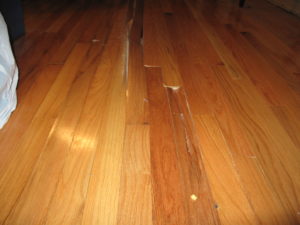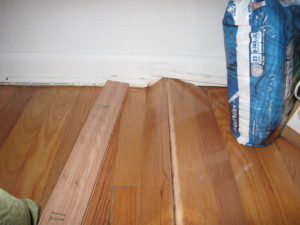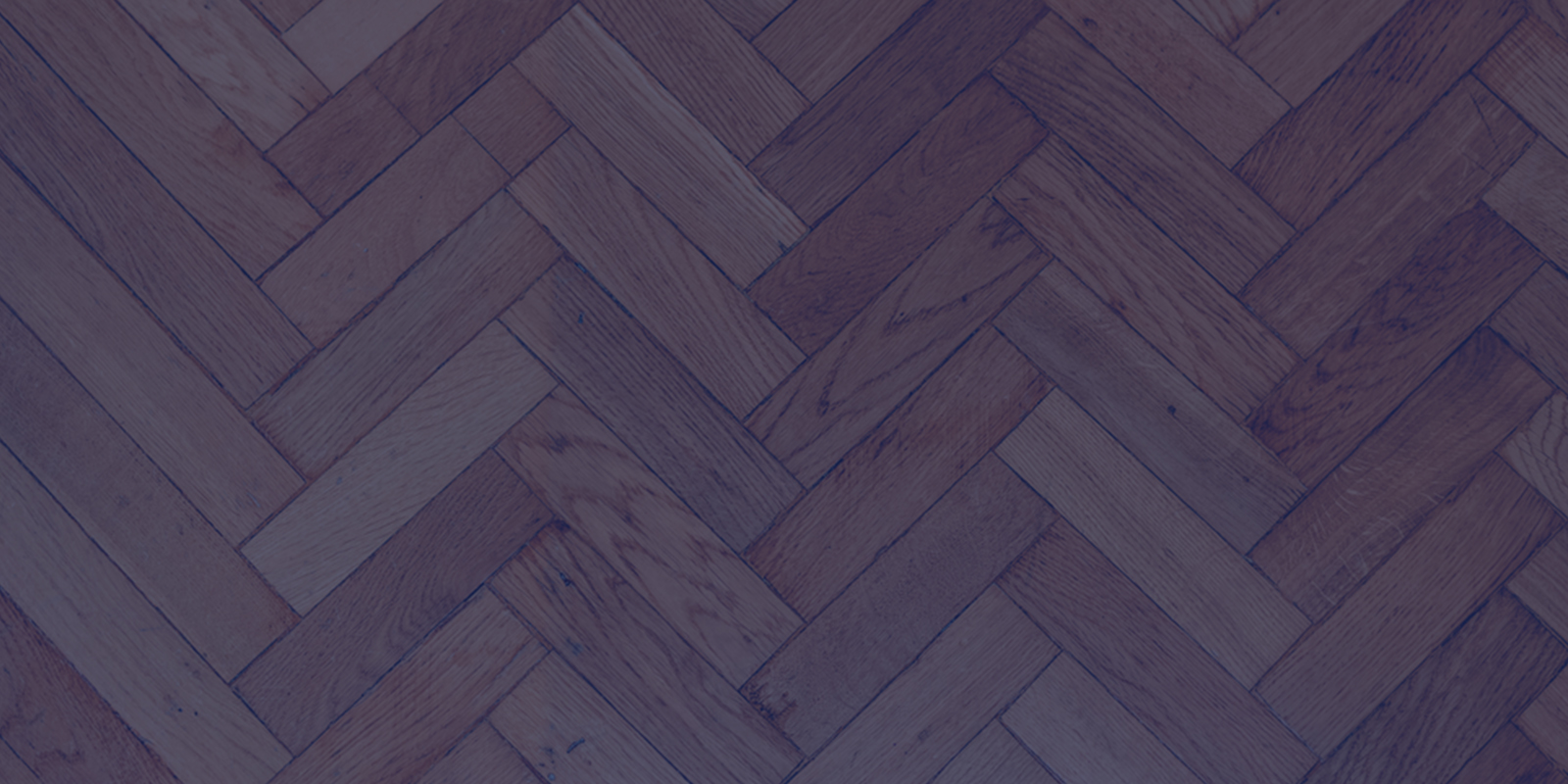Wood floors are beautiful and are often an architectural element of interior space design. They can cause a space to feel clean and modern, or they can lend the feel of history. However, wood flooring problems and failures can occur, with many of the common issues caused by exposure to moisture.
A wood floor installed in a climate-controlled environment will have a moisture content in the approximate range of 7% to 14%. Increases or decreases in the moisture content of the floor can result in dimensional changes of the wood planks. If a wood floor is exposed to sufficient excess moisture, the resulting expansion can manifest as buckling of the wood planks (Figures 1 and 2). Conversely, an overall decrease in moisture content can result in shrinkage and gaps between the floor planks.
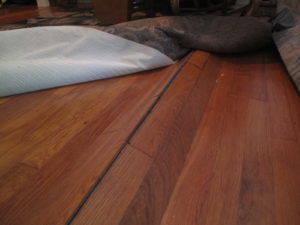
Figure 1. Buckled wood flooring.
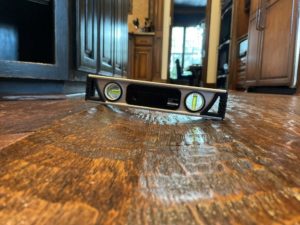
Figure 2. Buckled wood flooring.
A more common issue with wood flooring is “cupping” of the individual wood planks, which is a result of a moisture imbalance between the bottom and top surfaces of the plank. A higher moisture content at the bottom of the plank, such as from unintended moisture migration from beneath the floor, combined with a conditioned interior environment, can create such moisture imbalance. The bottom portion of the plank expands relative to the top surface, creating the “cupping” appearance (Figure 3).
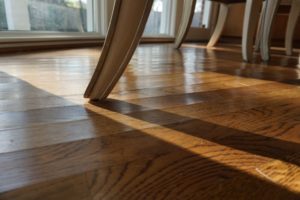
Figure 3. Wood floor cupping.
Nelson’s experienced investigators can evaluate wood flooring to determine the extent of common and uncommon problems, and identify potential causes of those problems. In many cases, a full consideration of the surrounding environment and building history is required. An investigation may also include testing, such as moisture measurements or a moisture survey.
